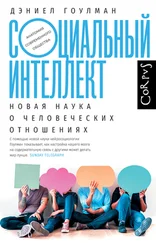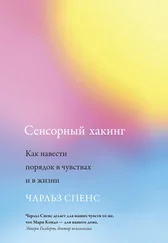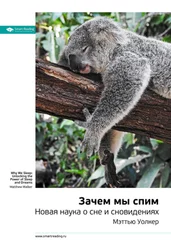Интересно отметить, что в Китае недавно запретили постить видео эротического поедания банана; Malm S. China bans erotic bananas: Live-video websites are told not to allow “suggestive” fruit-eating and hosts cannot wear stockings and suspen-ders // Daily Mail Online. 6.05.2016 (http://www.dailymail.co.uk/news/article-3577389/China-bans-erotic-bananas-Live-video-websites-told-not-allow-suggestive-fruit-eating-hosts-wear-stockings-suspenders.html).
Цит. по: Max Ehrlich. The Edict. L.: Severn House, 1972. Р. 173.
Spence C. Eating with our ears: Assessing the importance of the sounds of consumption to our perception and enjoyment of multisensory flavour experiences // Flavour. 2015. № 4:3; Elder R. S., Mohr G. S. The crunch effect: Food sound salience as a consumption monitoring cue // Food Quality & Preference. 2016. № 51. Р. 39–46. См. также видео: Tamal R. et al. Neuro cuisine: Exploring the science of flavor // Guardian Online. 23.05.2016 (https://www.theguardian.com/lifeandstyle/ng-interactive/2016/may/23/neuro-cuisine-exploring-the-science-of-flavour-tamal-ray).
How microwave meals are now on the menu at dinner parties // Daily Mail Online. 22.05.2016 (http://www.dailymail.co.uk/news/article-3603849/Third-guests-claim-not-bothered-served-ready-meal.html).
Как заявил легендарный американский торговец Элмер Уилер в своей знаменитой маркетинговой мантре 1930-х: «Не продавайте стейк – продавайте ШИПЕНИЕ!»; Wheeler E. Tested Sentences That Sell. N. Y.: Prentice Hall, Inc., 1938; http://www.elmerwheeler.net/
Pavlov I. P. Conditioned Reflexes: An Investigation of the Physiological Activity of the Cerebral Cortex / Тrans. and ed. G. V. Anrep. L.: Oxford University Press, 1927. Подобные эффекты ассоциативного обучения были продемонстрированы во множестве других видов: см. Frolov Y. Fish Who Answer the Telephone, and Other Studies in Experimental Biology / Тrans. E. Graham. L.: Kegan Paul, Trench, Tubner & Co., 1937. Ch. 4.
Stummerer S., Hablesreiter M. Food Design XL. N. Y.: Springer, 2010. Я думаю, нам необходимо провести тщательную гастрофизическую дегустацию, прежде чем придавать слишком много значения этому конкретному заявлению.
В частности, спектральное содержание звука, ассоциирующегося с работой кофемашины, было либо увеличено, либо уменьшено на 20 децибел, его частота была между 2,5 и 6,5 килогерц; Kn ö ferle K. M. Using customer insights to improve product sound design // Marketing Review St. Gallen. 2012. № 29(2). Р. 47–53; Knöferle K. M. It’s the sizzle that sells: Crossmodal influences of acoustic product cues varying in auditory pleasantness on taste perception (2011; неопубликованная рукопись).
Spence C., Zampini M. Auditory contributions to multisensory product perception // Acta Acustica united with Acustica. 2006. № 92. Р. 1009–1025.
Samuelsson P. Taste of sound – Composing for large scale dinners’: Кeynote presentation given at the Sensibus Festival. Seinäjoki, Finland. 13–14 March 2014; см. также: Spence C. Music from the kitchen // Flavour. 2015. № 4:25.
См. видео: The sounds of Massimo Bottura by Yuri Ancarani & Mirco Mecacci // The New York Times Style Magazine, 2016 (https://www.nytimes.com/2016/10/17/t-magazine/massimo-bottura-chef-osteria-francescana.html).
Zampini M., Spence C. The role of auditory cues in modulating the perceived crispness and staleness of potato chips // Journal of Sensory Science. 2004. № 19. Р. 347–363.
О последних можно сказать: западные, образованные, промышленные, богатые и демократические (англ. WEIRDos): Western, Educated, Industrialized, Rich and Democratic. См.: Henrich J., Heine S. J., Norenzayan A. The weirdest people in the world? // Behavioral and Brain Sciences. 2010. № 33. Р. 61–135.
Demattè M. L. et al. Effects of the sound of the bite on apple perceived crispness and hardness // Food Quality and Preference. 2014. № 38. Р. 58–64; Wilson B. The kitchen thinker: Are the crunchiest apples the most delicious? // Daily Telegraph. 29.09.2014 (http://www. telegraph.co.uk/foodanddrink/11110201/The-Kitchen-Thinker-Are-the- crunchiest-apples-the-most-delicious.html).
Я слышу, как вы спрашиваете: «Сливочные?» Да, даже сливочная еда слегка изменяет звук, который производит ваш язык, когда вы проводите по зубам и стенкам ротовой полости.
Насыщение углекислым газом когда-то сигнализировало о том, что продукт, к примеру перезревший фрукт, начинает портиться, а ныне это наиболее желательное свойство напитков. Chandrashekar J. et al. The taste of carbonation // Science. 2009. № 326. Р. 443–445.
Можно подумать об этом как о своего рода чревовещании; см.: Jackson C. V. Visual factors in auditory localization // Quarterly Journal of Experimental Psychology. 1953. № 5. Р. 52–65; Alais D., Burr D. The ventriloquist effect results from near-optimal bimodal integration // Current Biology. 2004. № 14. Р. 257–262.
Zampini M., Spence C. Modifying the multisensory perception of a carbonated beverage using auditory cues // Food Quality and Preference. 2005. № 16. Р. 632–641. См.: C. Spence . Обзор: Eating with our ears: Assessing the importance of the sounds of consumption to our perception and enjoyment of multisensory flavour experiences // Flavour. 2015. № 4:3. Существует интересное исследование, показывающее, что звук можно использовать для изменения вкусовых впечатлений и ощущения сливочности во рту; см.: Iijima D., Koike T. Change of mouthfeel by means of cross-modal effect using mastication sound and visual information of food // IEICE Tech Report. 2013. № 113. Р. 83–86 (на яп. яз.); Aken van G. Listening to what the tongue feels // Nizo. 30.01.2013 (https://www.nizo.com/news/latest-news/67/listening-to-what-the-tongue-feels/); Van Aken G. A . Acoustic emission measurement of rubbing and tapping contacts of skin and tongue surface in relation to tactile perception // Food Hydrocolloids. 2013. № 31. Р. 325–331.
Читать дальше
![Чарльз Спенс Гастрофизика. Новая наука о питании [litres] обложка книги](/books/388013/charlz-spens-gastrofizika-novaya-nauka-o-pitanii-cover.webp)
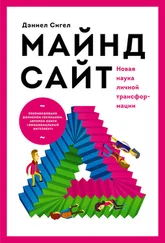
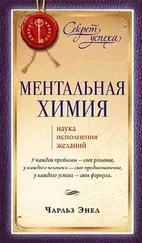



![Колин Кэмпбелл - Китайское исследование - обновленное и расширенное издание. Классическая книга о здоровом питании [litres]](/books/388520/kolin-kempbell-kitajskoe-issledovanie-obnovlennoe-thumb.webp)
![Дэвид Райх - Кто мы и как сюда попали [Древняя ДНК и новая наука о человеческом прошлом]](/books/396012/devid-rajh-kto-my-i-kak-syuda-popali-drevnyaya-dnk-i-thumb.webp)
